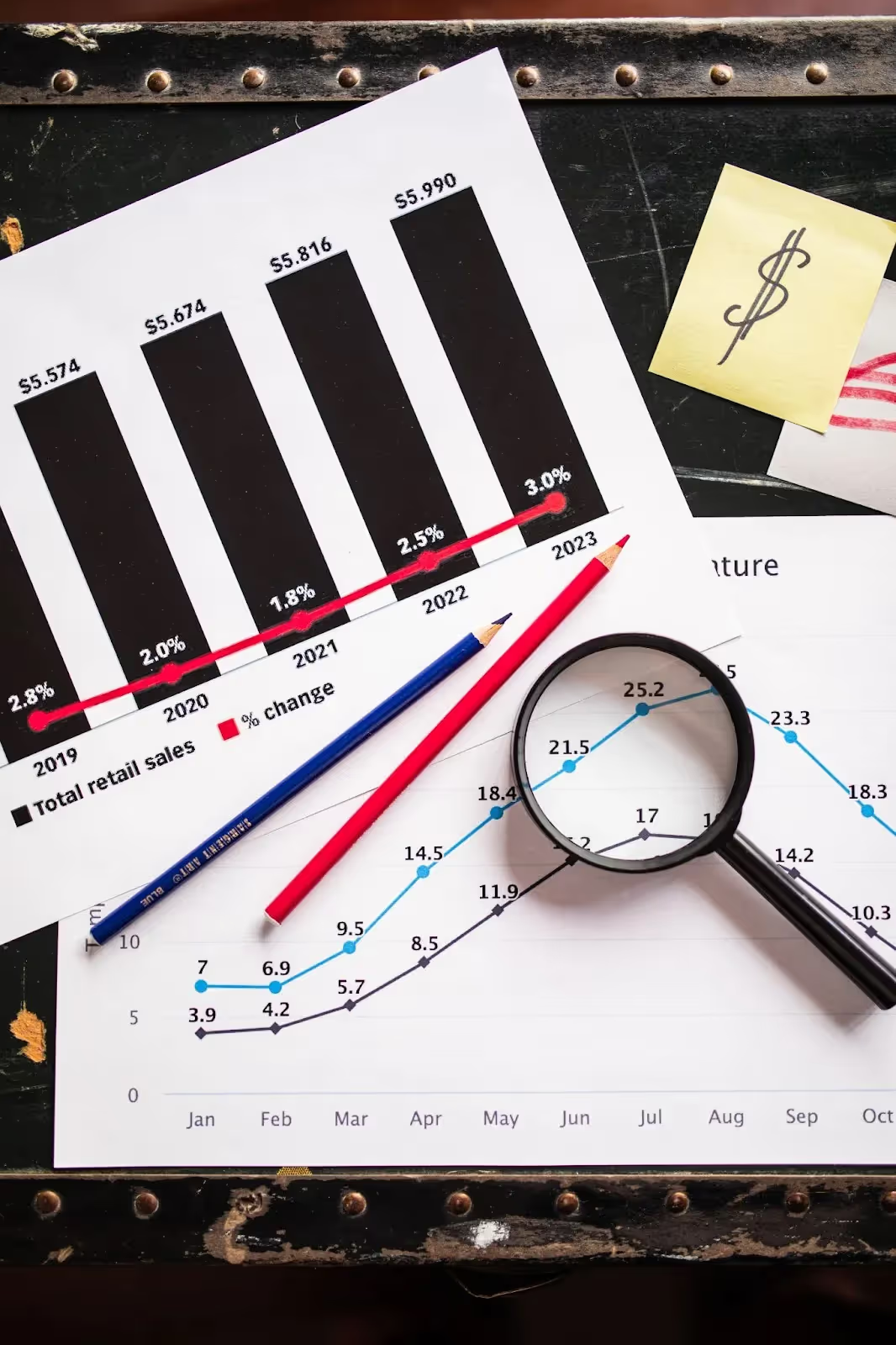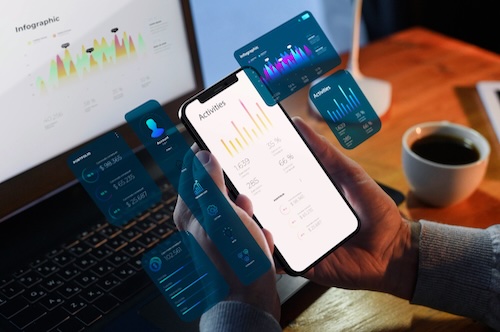There’s no question that over the last decade, influencer marketing has seen massive growth. The creator economy has doubled in value since 2019 and is currently a $16.4bn industry. Brands have realized that influencer marketing is yielding higher returns compared to campaigns with traditional celebrities. But to get it right, brands need granular influencer data to build successful marketing campaigns.

There are a lot of variables that marketers must fine-tune to get the maximum value out of influencer marketing campaigns. Here’s how influencer marketing data can help brands get the most out of their promotions:
Identify best-suited creators for your brand with Influencer data
Choosing the correct influencer can be the difference between a successful campaign and a promotion that fails to break even. The process is much more complicated than picking an influencer with a large following.
The importance of choosing the right influencer
Influencers cater to particular demographics

One of the main reasons for the success of influencer marketing is that social media creators influence particular demographics. Some influencers have a large following of teenagers, while some creators may have built a following of business professionals. There are also influencers with highly specific audiences, such as Berliners interested in fashion or New Yorkers who love street food.
Traditional celebrities such as actors, athletes, and others never had such specific demographics among their followers. An actor could promote a fashion brand, but so could an F1 driver or a football player, and the results would be more or less similar. But in influencer marketing, brands get a much more diverse choice of influencers.
Influencers’ audience trusts them, but only for very specific products or services.
If a fashion influencer talks about a new sneaker brand, their audience may take immediate action. But the results will be different if the same influencer spoke about a SaaS product.
Influencer marketing data helps brands look deeply into a creator’s audience. They can leverage the data to identify influencers that cover specific subjects and products and has a tone that resonates with their brand. Marketers can use this data to build strong campaigns with influencers whose following aligns with their target audience.
Influencer data helps brands and marketers leverage the best part of the creator economy: instead of choosing a random celebrity and hoping for the best, they can choose an influencer that best works for their product or brand and get more control over their marketing strategy.
But influencer marketing data is not just for picking the right influencer
Choosing the right creator plays a major role in a successful influencer marketing campaign. But that’s not the only factor.
Accurate and up-to-date influencer data empower brands to drive these factors and hit their goals with a campaign.

The different uses of influencer data:
- Influencer data helps brands understand the type of marketing that works with a creator’s audience
- With influencer marketing data, brands can get maximum ROI on influencer marketing
- Influencer marketing data help brands avoid scams and frauds
Influencer data helps brands understand the type of marketing that works with a creator’s audience
One of the major advantages of influencer marketing is that brands get more control over the variables that determine a campaign’s success. But it can also be a disadvantage; if you don’t fine-tune those variables, you’ll lose out on the results.
For some influencers, a single Instagram post may be enough, while another creator’s audience may respond better to a YouTube unboxing video.
With in-depth influencer data, brands and marketers can create campaigns that resonate well with a creator’s followers. Brands can figure out when to conduct promos, what drives conversions, or even at what point of their campaign they should pitch their product or service,
With influencer marketing data, brands can get maximum ROI on influencer marketing.

While influencer marketing can potentially generate high ROIs, it's not always cheap. The cost of a single Instagram post can range anywhere from $25 to $25,000. Marketers can struggle to break even on their influencer marketing plans without a strong strategy. By leveraging influencer marketing data, brands can better manage their marketing budget.
With granular data about influencers’ engagement, followers, and past campaign success, brands can negotiate better with creators about the cost. This alone can help mitigate the possibility of a failed campaign.
Brands can also use influencer data to work with micro-influencers. They tend to have a smaller highly specific group of followers. Their smaller follower count could mean lower marketing costs. But marketers can get the same results they would with a macro influencer with a much larger following by identifying the right creator using influencer data.
Besides planning and executing a strategy, influencer marketing data is also important to evaluate its success. With influencer information, such as the number of viewers, impressions, and conversions, brands can assess their strategy's success and build future campaigns.
Influencer marketing data help brands avoid scams and frauds.
The growth of the creator economy has prompted the growth of associated scams and frauds as well. The most common among these is faking the numbers; reports suggest that 25% of influencers have purchased followers at some point. The alarming aspect is that it's not difficult to do this; you can get hundreds or even thousands of followers for as little as five dollars.
While most influencer marketing agencies and brands rely on more than follower counts to choose a creator, it is not difficult to fake other metrics. The same businesses that offer fake followers often offer fake engagement as well.
With detailed and real-time influencer data, brands can identify fake influencers and avoid these scams.
How can brands find accurate influencer marketing data?
As important as influencer data, it's not easy to get accurate and updated data. Earlier (and even now), many brands and marketing agencies used to request screenshots of analytics from influencers to verify them and gauge the success of a campaign.
But screenshots were fairly easy to manipulate, and this method requires a level of trust between the influencers and brands. Some brands resorted to screen-sharing and viewing the analytics in real-time or having the influencers show their analytics in person.
Some marketing agencies even resorted to manually going through influencers’ profiles and recording the engagement and follower data.
The problem is that none of these methods are scalable. It takes too many resources to collect this data and update them regularly.
Currently, marketers rely on these two methods to access influencer data:
- Through third-party data scraping solutions
- Through APIs from different influencer platforms
Collecting influencer data from third-party solutions
Many third-party solutions offer influencer data for marketers. These solutions often rely on data-scraping tools to collect the required information from social media platforms. They then clean the data and make it easy for marketers to analyze. These solutions often rely on other third-party platforms to bring the data together.
Third-party platforms also rarely collect consent from influencers. Social media platforms have started taking note of this and are restricting these solutions that don’t have a consent mechanism.
Pros
- Marketers get influencer data from different platforms
Cons
- The data is rarely up-to-date; these solutions simply cannot collect the data, remove the noise, and make them available in real-time.
- There’s no guarantee that the data is accurate. Third-party data is prone to errors, even more so when multiple parties are involved.
- Third-party solutions typically do not collect consent from the influencers before accessing their data.
- Since these solutions can collect only what’s publicly available, they can’t provide all the data marketers may need. For instance, you can’t get data about Instagram stories from these solutions.
Accessing influencer marketing data directly from social media platforms
Many creator platforms offer APIs to access influencer data directly from the platform. Unlike third-party solutions, marketers get accurate and updated data from them.
Pros
- Marketers get accurate real-time influencer marketing data
- Brands get complete data regarding influencers’ social media engagement and activities.
Cons
- Building and managing APIs take considerable resources and may not be viable for all businesses.
- Building APIs take time which may delay campaigns or product launches.
The best option? Getting all the influencer data from a single API with Phyllo
Phyllo offers accurate first-party data for influencer marketing agencies. It collects the data directly from influencer platforms, manages influencer consent, and presents accurate and up-to-date data regarding influencers.

Instead of building and managing multiple API integrations for the different influencer platforms, businesses can use just a single API to collect the data. Phyllo reduces the technical expertise and infrastructure required to collect and update influencer marketing data.
Simply put, Phyllo presents the best of both worlds; get accurate first-party data without spending too many resources or investments. With Phyllo, brands and businesses can launch campaigns quickly and with minimal resources or overheads.
Sign up now and build successful influencer marketing campaigns with first-party influencer data from Phyllo
Accurate, in-depth, and up-to-date influencer data is crucial for a successful influencer marketing campaign. And that’s exactly what you get from Phyllo.
Still not convinced? Sign up for a demo and test out our solution now.
We offer complete access to our APIs and developer support as you test our features.
Ready to join the big leagues and empower your team with a state-of-the-art influencer management platform?

.webp)







